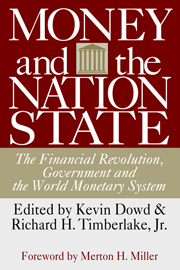Silicon Valley Bank (SVB) was consumed by its own incompetence, yet the problem it faced was a result of poor monetary policy.
The Fed expanded the money supply at an unprecedented average annual growth rate of 19 percent between February 2020 and February 2022, and then reversed gears and began to shrink the money supply by an unprecedented cumulative 2.2 percent between March 2022 and January 2023. To put those numbers into context, based on the quantity theory of money, the rate of growth of the money supply that is consistent with the Federal Reserve’s hitting its 2 percent inflation target is 5–6 percent per year. These dramatic Fed maneuvers stressed the banking system, and SVB and other regional commercial banks are the collateral damage.
If the Fed’s macroprudential policies weren’t bad enough, its microprudential policies were also plagued by mismanagement. Regulation of SVB falls under the purview of the Federal Reserve Bank of San Francisco. Any bank examiner from the San Francisco Fed should have seen the writing on the wall. Even SVB’s 2022 10-K filing (its annual financial report) to the Securities and Exchange Commission reported a $15 billion loss on the bank’s held-to-maturity securities.
To stem the crisis, the Fed has published its Bank Term Funding Program, designed to provide a cushion of liquidity to the banking system. As a result, the market now thinks that the Fed will pivot, or reverse its monetary policy. On March 8, the market-implied probability of a 50-basis-point rate hike at the March Federal Open Market Committee meeting stood at 79 percent. After the publication of the Bank Term Funding Program on March 12, that probability sunk to zero. Today the market implies an 83 percent probability of a 25-basis-point-rate hike and a 17 percent probability of no rate hike. This volatility and uncertainty are all thanks to the Fed’s monetary mismanagement.
This isn’t the first time we have witnessed a pivot as a result of a central bank’s monetary mismanagement. A spectacular example was the acute crisis that overtook the British financial system in September 2022 when the Bank of England (BoE) had to reverse its contractionary policies temporarily. British interest rates had been so low that pension funds could not cover their fixed long-term obligations with the yields they received from securities (called “gilts”) that they had bought for this purpose from His Majesty’s Treasury. To increase their income, pension funds leveraged their purchase of gilts, borrowing money to fund the operation.
In late September 2022, the British government decided to lower taxes, leaving a substantial portion of the budget uncovered. The increased sovereign risk pushed up British interest rates, and the pension funds suffered balance-sheet losses on the gilts they were holding, which put them in danger of immediate bankruptcy. This was avoided by a BoE pivot. The BoE purchased gilts to increase their price and lower interest rates, but in the process the broad money supply expanded, and the BoE’s inflation fight was put on hold.
The ancient Greek navigators, on their way to and from Sicily, had to pass between a sharp rock and a powerful whirlpool, which they personified as the twin monsters Scylla and Charybdis. Trying to avoid one would put the sailors in reach of the other. Much like the ancient Greek navigators, the Fed is now, thanks to its own mismanagement, facing a similar dilemma. The first is to continue to engage in a monetary squeeze to fight inflation while inflicting pain on the commercial-banking system. The second option is to provide commercial banks with liquidity, which will probably set the Fed back in its fight against inflation. Thanks to the Fed’s past monetary transgressions, it is left to choose between Scylla and Charybdis.










